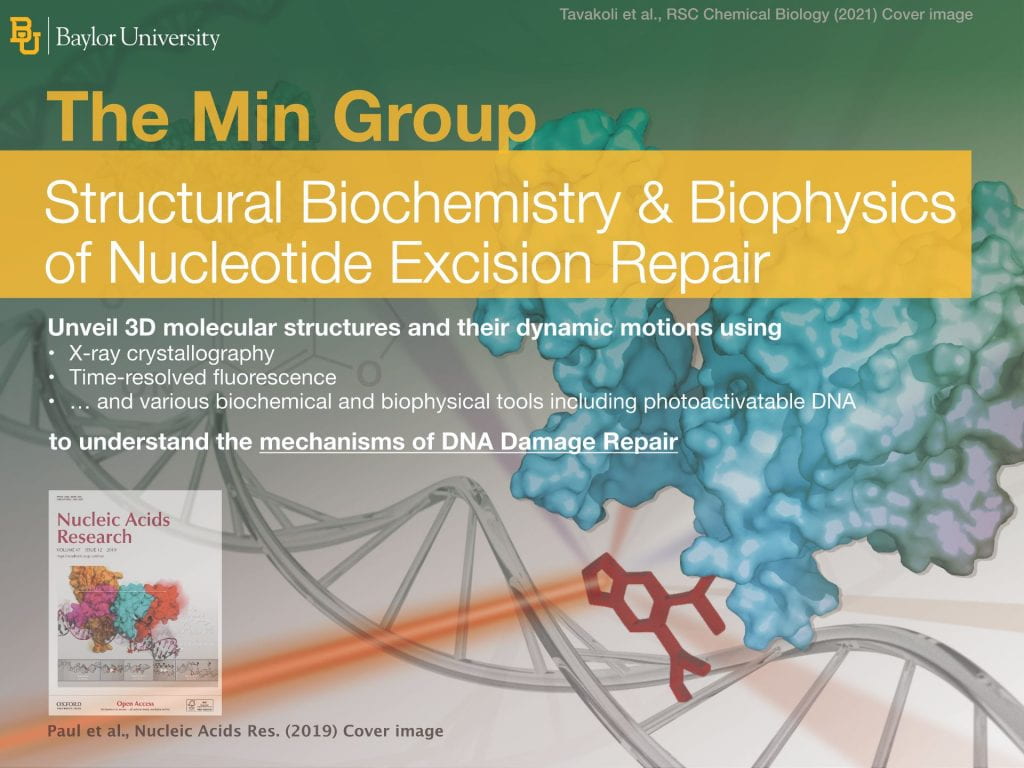Structure and Mechanism of Eukaryotic Nucleotide Excision Repair
The constituent of our genome, DNA is continuously under attacks from the surrounding, which give rise to a plethora of DNA damage. If the damage is left unrepaired, it can result in mutations in critical genes, which may cause uncontrolled cell growth leading to cancer. Luckily, cells are equipped with intricate networks of proteins that cure the damage. In particular, DNA damage generated by ultraviolet (UV) light and various environmental pollutants is repaired by the nucleotide excision repair (NER) pathway. Defects in this pathway can cause skin cancer and also neurological and developmental abnormalities. We are currently focusing on understanding the detailed mechanisms of damage recognition and subsequent repair in NER.
In particular, the nucleotide excision repair (NER) pathway repairs a broad range of DNA lesions generated by ultraviolet light and various chemicals from the environmental pollutants, and defects in this pathway can cause predisposition to cancer and also neurological and developmental abnormalities. NER proceeds in a stepwise manner by sequentially recruiting multiple factors onto the damage site. The xeroderma pigmentosum C (XPC) protein plays a key role in initiating NER in the global genome by recognizing diverse DNA damage and recruiting the downstream factor, transcription factor TFIIH complex. We are currently focusing on understanding the detailed mechanism of the damage recognition and subsequent repair steps in NER.

Pingback: BaylorProud » Meet Baylor’s groundbreaking expert on DNA damage & repair